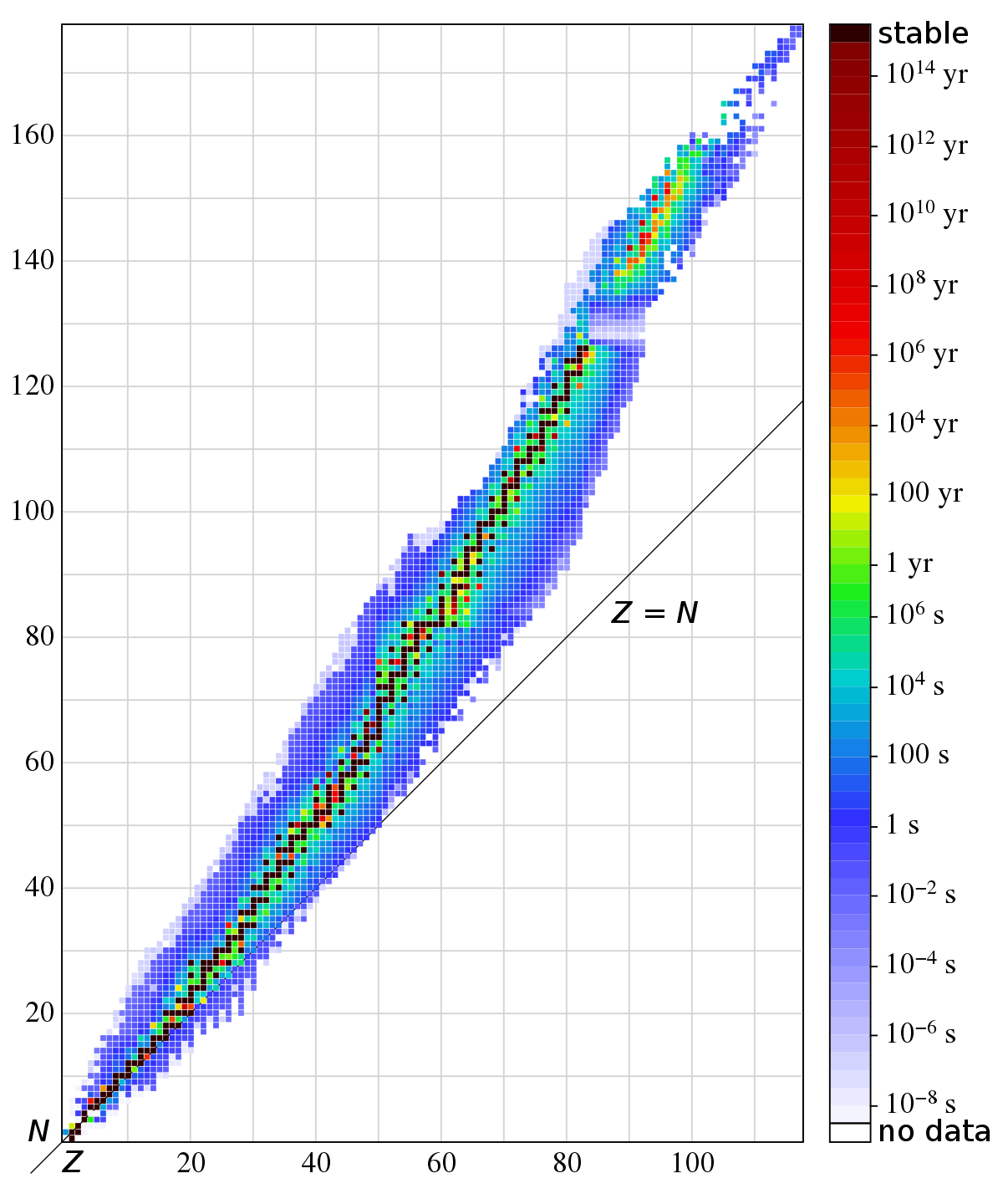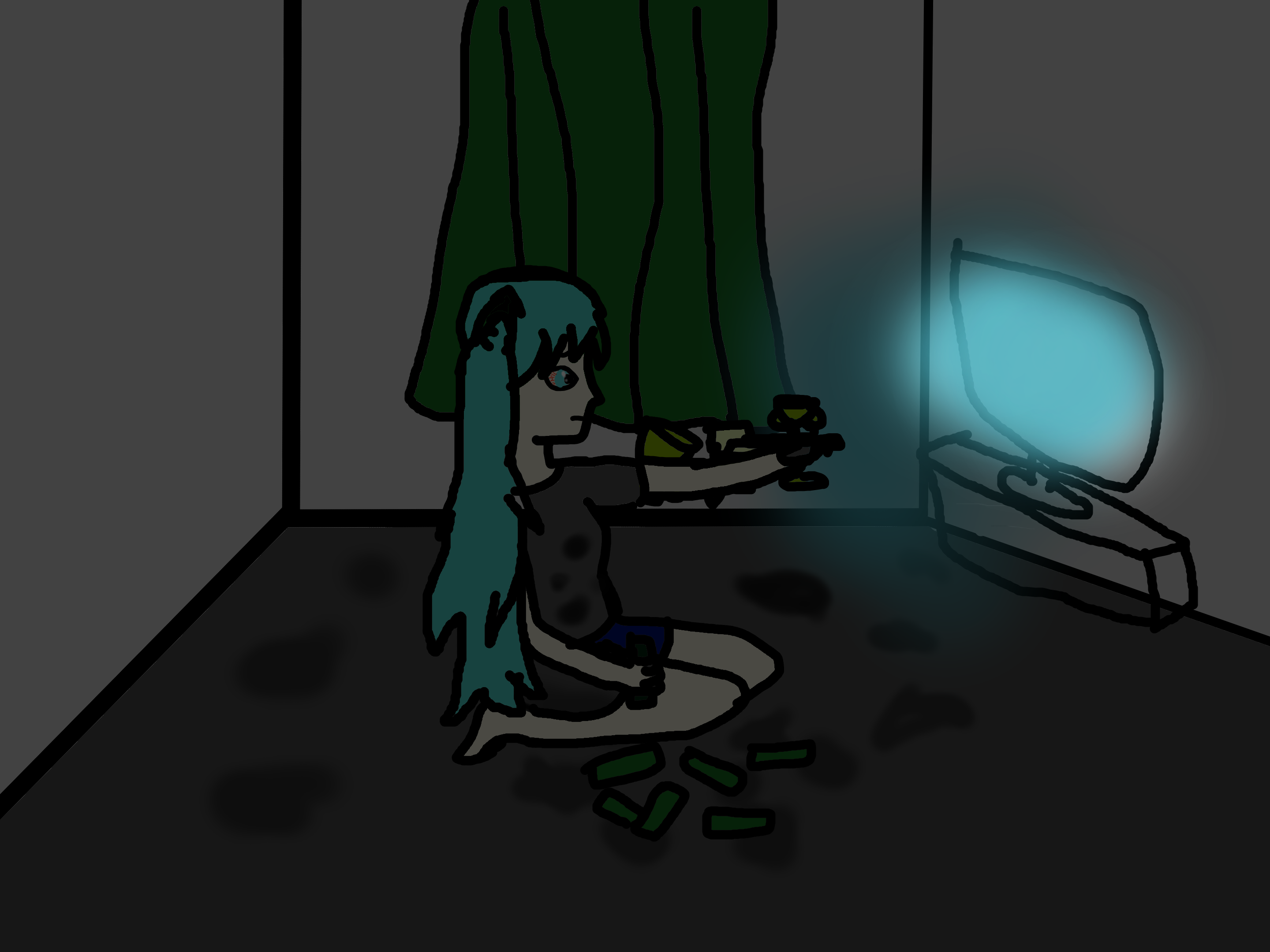Specifically why is it so radioactive for no obvious reason? Why does it not have any known stable isotopes?
The short answer is that it’s ultimately down to the number 43 (the number of protons technetium has) and the number of neutrons that could potentially form stable isotopes being atomically weird numbers.
The picture below shows relative stabilities of isotopes of different elements. N represents the number of neutrons, Z represents the number of protons. As a starting rule, moving above or below the N=Z line (creating an excess of protons or an excess of neutrons) tends to decrease overall stability.

You can see for lower atomic numbers, the most stable isotopes closely follow N=Z because protons and neutrons “balance” each other in the nucleus. But as you increase the atomic number (and therefore the number of protons), the protons begin to repel each other more strongly, which means additional neutrons are needed to make the nucleus stable. This is why the “line of stability” (the line of dark red “stable” elements) increases above the N=Z line as you increase the atomic number. Deviation from this line means an atom is less “beta stable” (and therefore more likely to beta-decay).
There are certain “magic” numbers of protons and neutrons that are more stable than others because they comprise a full shell. These occur at 2, 8, 20, 28, 50, 82, and 126. This means nuclei that have (or are very close to) one of these numbers of protons, or neutrons, or protons + neutrons, are inherently more stable. If you look at the other stable isotopes on the graph, you would expect a stable isotope of technetium would need around 55 neutrons to follow the line of stability.
As it turns out, the combinations of 43 protons and 55 (± a few) neutrons just can’t form a stable enough configuration to not beta-decay.
Just like there are “islands” of relative stability predicted, there are also some islands of instability where the geometry just won’t line up correctly no matter how you arrange it. Think of an atomic nucleus like a soccer ball – A soccer ball has a specific number of pentagons and hexagons that fit together (almost) perfectly. You can’t make any such shape with hexagons alone. If you have even one too many or one too few, it might still make a mostly spherical shape, but no matter what you do it will have a weird wrinkle, flap, or gap somewhere, and that’s the kind of thing that will cause instability, it won’t balance correctly, it won’t fly true, and if the flaw is big enough eventually the inconsistency will tear it apart.
The patterns of various numbers of two dimensional shapes that can form a seamless sphere is not intuitive or obvious at a glance and the math required to compute it is reasonably complex, but the result is straightforward. Some combinations of shapes work easily for this. Others only work in very specific arrangements. And some simply won’t work at all. The same sort of idea seems to apply to atoms, although we can’t say we completely understand all the nuances of the forces at play, the principles and outcomes are easy to measure. This is of course still an area of significant research and study, because it is important and has implications and potentially applications ranging from deeply obscure astrophysics and cosmology questions to very potent energy technologies that could change our society. But no matter what we discover, our observations of the outcomes are quite consistent and very repeatable, and the atomic patterns that we call Technetium simply don’t stay together very long.
Lots of stuff about patterns that tile or do not tile into regular shapes does not make much intuitive sense, just like prime numbers and irrational numbers do not follow any obvious pattern we can predict, and indeed modern cryptography is dependent on the fact that prime numbers do not follow any particular pattern. Patterns that look like they should be trivial to fit together do not, like intuition might suggest that the square root of 2 should be at least a rational number if not a natural one. And things that look impossible to tile can snap together seamlessly when placed with some careful attention and planning. Technetium is like one of those mathematical or geometrical patterns that looks like it should be trivial but no matter what you do the pieces just will not fit together into any useful shape. At least not for very long.
Some further reading on patterns like Aperiodic Tiling might also be of interest. Lots of fun stuff down such rabbit holes.
Something about its nuclear structure. There just isn’t a stable structure its protons and neutrons can form.
Removed by mod




